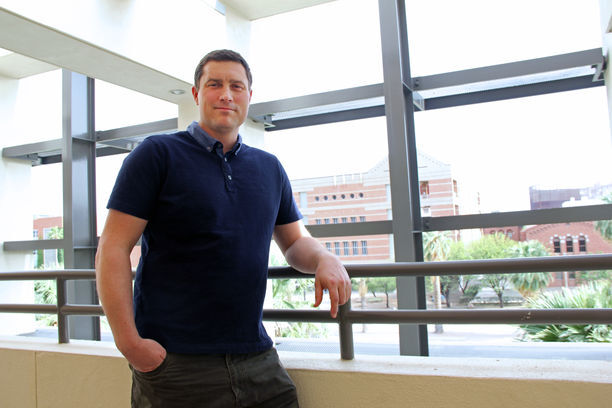The virus that causes AIDS emerged in New York City in 1970 or 1971 — a decade before it was identified, says an international team of researchers, led by evolutionary biologist Michael Worobey of the University of Arizona.
The research results, published online Wednesday in the journal Nature, also provide evidence that a single promiscuous individual, mythologized as “Patient Zero,” did not jump-start the AIDS epidemic in the United States by contracting the disease in Haiti or Africa and infecting multiple partners in the United States later in the decade.
Emergence of the virus predates the international sexual contacts of Gaétan Dugas, a French Canadian flight attendant whose multiple sexual contacts were central in a Centers for Disease Control study of the mysterious disease and later documented in Randy Shilts’ chronicle of AIDS in America, “And the Band Played On.”
Worobey’s team also examined a blood sample given by Dugas, who died of AIDS in 1984. It was “typical of U.S. strains of the time.”
“In short, we found no evidence that Patient 0 was the first person infected by this lineage of HIV-1,” the Nature report states.
Worobey said his lab at the UA, led by co-author Thomas D. Watts, had to invent new techniques to extract the full genome of the virus from blood samples collected in 1978 and 1979 in separate studies of gay men with hepatitis-B virus.
They eventually extracted three nearly full genomes from the San Francisco samples and five from the New York study.
It was not easy, said Watts, who came to Worobey’s lab in 2009 when the attempt was ongoing but not yet successful.
“We were trying to put the RNA in these samples into next-generation sequencing tools. It was horrible. We got nothing at all.”
After six months with similar results, Worobey and Watts “took a step back and tried to use older PCR (polymerase chain reaction) methods.”
In any given sample, there might be only one copy of a certain stretch of the genome, Watts said.
“We had to farm these little bits and pieces so that we got a lot of them before we did the PCR.”
“It wasn’t rocket science; it was sweat equity,” Watts said.
Using those eight nearly complete genomes of a strain of the virus known as “HIV-1 group M subtype B,” Worobey was able to reconstruct the path HIV-1 took in the United States, using mutations in the genome as a genomic clock.
As hypothesized in previous work by Worobey and others, HIV came first to the Caribbean from Africa about 1967. By 1970 or 1971, it was in New York City, though its symptoms would not be recognized for years.
It made its way to San Francisco in 1976, the paper says.
“What I like about this is that we’ve been able to step back in time to such early genome sequences,” Worobey said by phone Wednesday.
“My lab, and in particular Tom Watts, came up with a good way of stitching together genomes from highly degraded samples.”
The human side of the story was led by co-author Richard McKay, a medical historian at the University of Cambridge, who is working on a book titled: “Patient Zero and the Making of the North American AIDS Epidemic.”
The Nature report notes that Dugas was never identified in the medical literature and that his central role in research into its causes came about because he aided researchers by identifying his sexual partners.
Worobey said Dugas was originally referred to as patient “O.” A later transcription error changed that to “zero.”
“It stuck in people’s minds as a general term for first patient,” Worobey said.
“That (CDC) paper placed him centrally, more central than he deserved to be, because he was helpful to CDC in providing names of contacts and blood samples.”
“There has always been something unsettling about this person becoming synonymous with bringing the virus to North America,” Worobey said.
The HIV genome sequenced from his blood sample proves “he was nothing special. He was just one of many, many people already infected.”
“There is no good reason to assign blame to any of these individuals or countries or areas that were hit earliest,” he said.
“Part of the history of HIV has been an unfortunate blaming of people,” said Scott Blades, executive director of the Tucson Interfaith HIV/AIDS Network.
“It is a medical condition, yet sometimes people feel a need to moralize the virus — to assign responsibility or blame.”
Blades said people are less likely to do that than they were in the early days of the disease. In the 1980s, he said, politicians did not pay adequate attention to it because it was a “gay disease.”
“That is something I continue to be angry about and something I continue to grieve about,” Blades said.
Today in America, 1.2 million persons are living with AIDS, he said, “and we could have stopped this early on.”
Studies like this one are great because they advance the scientific knowledge about the virus, he said.
“And hopefully it will remind people HIV is still present. There is no cure and no vaccine.”





